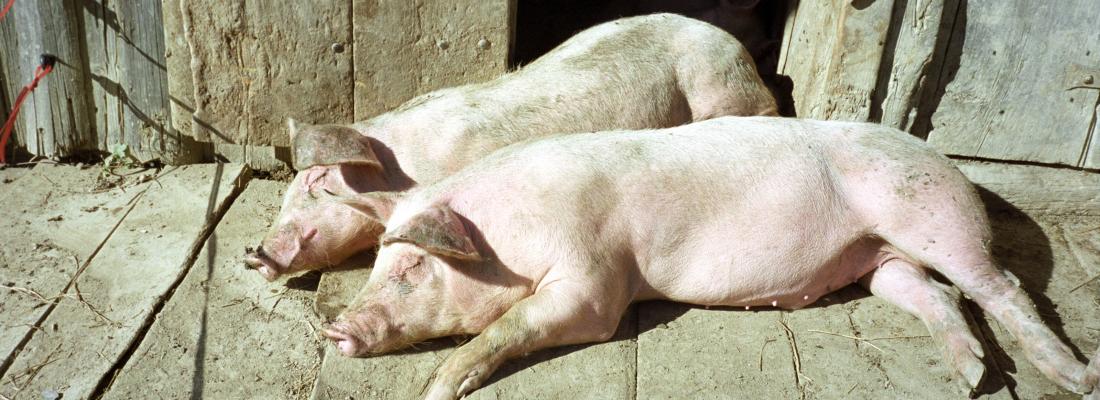Agroecology Reading time 6 min
Pigs fed live yeast supplementation tolerate heat better
Published on 09 June 2023

In growing pigs, reduced growth during heat stress (HS) is mainly related to decreased feed intake.
The study aimed to determine whether the reported positive effects of live yeast (LY) supplementation in HS pigs were due to a modified feeding behaviour or energy metabolism, and if these can be replicated by imposing an increased meal frequency. The effect of LY supplementation (0 (NS) v. 100 (LY) g/ton of feed), and of feeding window (FW) (unlimited or Unli, 2FW of 1 h each and 8FW of 15 min each) were measured in entire male finishing pigs (n 36). Ambient temperature was at 22°C during the thermoneutral (TN) period (5 d) and at 28°C during the HS period (5 d).
Heat exposure decreased DMintake (DMI) and retained energy (RE) (–627 and −460 kJ·kg BW–0·60 · d–1, respectively; P < 0·01). During HS, LY supplementation in Unli pigs decreased inter-meal intervals (P = 0·02) attenuating HS effect on DMI which tended to improve RE (P = 0·09). NS – 8FW had higher DMI and RE than NS – 2FW (P < 0·05) but protein deposition (PD) were similar. Supplemented pigs had higher PD during HS regardless of FW (þ18 g · d–1; P = 0·03). Comparing the 2FW groups, improved heat tolerance of LY-supplemented pigs were due to improved insulin sensitivity (P < 0·05) and latent heat loss capacity after a meal (P < 0·05) allowing them to increase their DMI (via an increased number of meals) and thus their energy efficiency. Imposing an increased meal frequency improved DMI in HS pigs but did not replicate positive effects of LY on PD.
Serviento, A.M.; Castex, M.; Renaudeau, D.; Labussiere, E.; Effect of live yeast supplementation and feeding frequency in male finishing pigs subjected to heat stress. British Journal of Nutrition: 16. - http://dx.doi.org/10.1017/s0007114522002513
